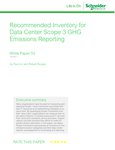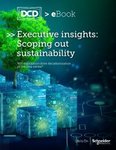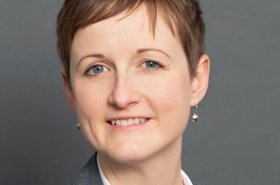When it comes to sustainability, companies are always looking at how they can do more. Schneider Electric, which puts sustainability at the forefront of its concerns, is no different.
The company recently released White Paper 53, a resource exploring the recommended inventory for data center scope 3 GHG emissions reporting. We were lucky enough to talk with one of the white paper’s writers, Rob Bunger, a little more about the motivations behind it, and how we can really tackle the Scope 3 beast.
“When looking at the overall carbon footprint of a data center, what you observe as the primary focus, rightly so, has been on improving Scope 2. Many operators have engaged in power purchase agreements to procure renewable energy, which has significantly reduced the data center's footprint in terms of purchased energy. Because of this, the attention has now turned to Scope 3, and the equipment within the data center is the largest culprit,” explained Bunger.
But this presents a set of challenges on its own, which according to Bunger are primarily related to obtaining accurate data. An example he offered is embodied carbon.
“If a data center operator intends to purchase a piece of equipment, they need to determine the amount of carbon associated with its manufacturing and the process of getting it installed in the data center. They also need to evaluate its carbon usage throughout the data center's lifecycle and assess the cost of recycling or disposing of it at the end of its life,” said Bunger.
While this is itself a monumental task, the data needed to monitor embodied carbon is increasingly available.
Schneider’s personal approach to handling this is using a PEP (product environment profile), also known as an eco-passport. The PEP is third-party organization-led, and helps to report on and audit Schneider’s life cycle assessments. This means that anyone can look up a Schneider product on their website and find out what the carbon footprint of that product is.
In general, Bunger concedes that the only company’s really facing the Scope 3 problem head on are the major industry players. But this is not a matter of neglect from those smaller companies, but sheer capacity and realistic ability to do so.
“The SEC (Securities and Exchange Commission) introduced regulations in 2022 concerning the reporting of carbon emissions as part of financial reporting. They set a target for certain larger companies to report on Scope 3 by 2024. However, there is ongoing debate regarding the appropriateness of this timeline.
“Regardless, commitments have been made by various companies. Microsoft, for example, has committed to becoming carbon negative, water positive, and achieving zero waste by 2030. Similarly, Google plans to run on 100 percent renewable energy continuously by 2030, rather than just from a net perspective, and in 2020, Meta also achieved net-zero operations,” said Bunger.
The process of reducing Scope 3 emissions can be summed up, according to Schneider Electric, into five stages. Setting reduction goals, developing an inventory, calculating and reporting, translating into actions, and finally monitoring and optimizing.
Ultimately, Bunger’s main point to make was that for now, precision is not as important as having a general understanding of emissions and transparency about what you are doing to make a change. The first step to making that happen comes from leadership commitment to the cause.
Tune into the full DCD>Talk to learn more about Schneider Electric’s approach to Scope 3 emissions here, or download the white paper for more information about how to develop your inventory.





